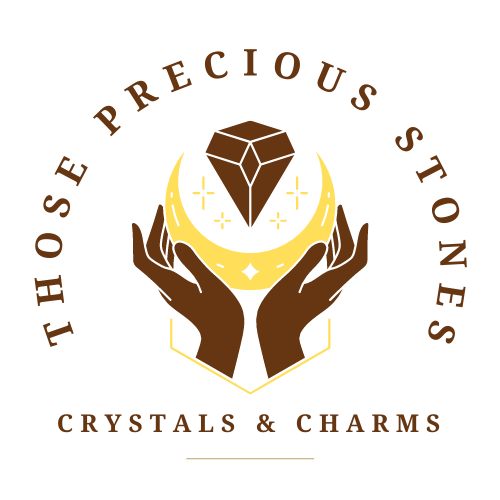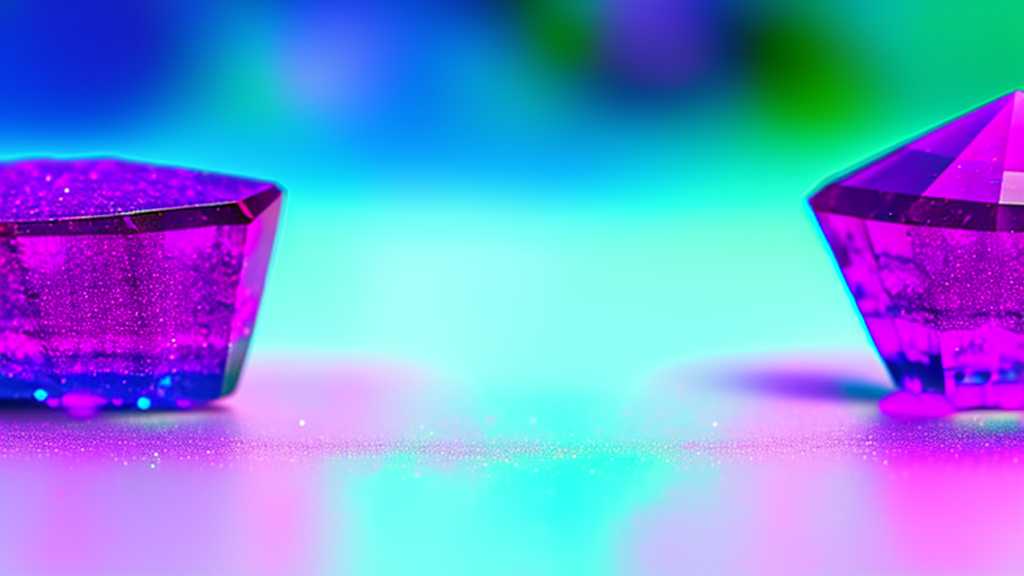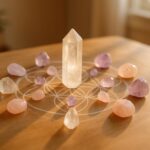Hello fellow crystal enthusiasts! Have you ever wondered if your favourite crystal can change color over time? If so, you’re in good company. This mind-boggling topic has been the center of many conversations and debates among crystal collectors and aficionados.
Well, today we’re going to lift the veil on this intriguing question! We’re going into the enlightening world of color-changing crystals and giving you a lowdown on five brilliant examples that have a knack for changing their hue over time. And if you’re currently staring at your once sky-blue Aquamarine puzzled because it’s slowly edging towards green, don’t worry. We’ll also try to demystify what it means when your precious stone decides to have a change of heart – or in this case, color!
So, let’s dive right into it, shall we?
Color-Changing Crystals – It’s Not An Illusion!
So here’s the million-dollar question: Can crystals change color over time? The simple answer is, “Yes, they can,” but be ready to be amazed because the whole thing is both wonderfully cosmic and undeniably scientific.
Unbeknownst to many, crystals can indeed change hues over time. But before you get all starry-eyed, there’s a catch. It’s not every crystal that’s up for this enchanting game of color-changing. Only a select few get to join the color-changing club. Which ones, you ask?
Patience, my friends, we’re getting there!
The Fab Five- Color-changing Crystals You Must Know About
Well, we’ve kept you waiting long enough. It’s time to introduce our fab five color-changing crystals. These charismatic little guys don’t just sit pretty on your shelf; they like to shake things up and take you by surprise!
First, we have Alexandrite. Known as the chameleon of the crystal world, this rare gemstone has the unique ability to change its color depending on the lighting conditions. You might see it as green in daylight but under incandescent light, it’ll surprise you with a ravishing red or a stunning purple.
Fluorite’s another fascinating one. This multicolor marvel is known to transition from clear to purple, blue, green, yellow, pink, or any combination thereof.
Then there’s the enchanting Labradorite. Often appearing plain and grey, it will dazzle you with peacock-like colors when hit by light from a certain angle – a phenomenon known as labradorescence!
Ametrine, the beautiful blend of amethyst and citrine, is another magical crystal that appears to change colors from various angles, flaunting stunning shades of violet and gold.
Lastly, we have Garnet. Now, you might be used to seeing it in a universally recognized shade of red but guess what? Certain types can flaunt a subtle color change from red-orange in daylight to red-purple under incandescent light.
So, there you have it, our fab five color-changers! But before you get too carried away with these magical transformations, there’s something else we absolutely must talk about… What does it mean if your crystal changes color?
Hmm, sounds intriguing, doesn’t it? Well, why don’t we find out in the next section!
Speculating the Color Spectrum Shift of Your Crystals
Isn’t it stunning how these five crystal beauties transform their shades, evoking wonder and mystification? Now, let’s reflect on a slightly different paradigm – what if you realize that your favorite crystal is gradually altering its color? What does this transformation signify, and should you be concerned?
Untangling the Reasons Behind Crystal Color Alterations
Here’s where it gets really fascinating! The color change in crystals doesn’t adhere to a one-size-fits-all explanation. Several contributing factors, ranging from oxidation to exposure to heat, light, acids, or bases, can mediate these changes. Even the individual crystal structure and its chemical makeup can play significant roles.
Let’s break it down a bit further and delve deep into the most common causes of color alterations:
- Oxidation: Some crystals may change color due to a process called oxidation. This occurs when the metallic elements in the crystal come into contact with the oxygen in the air, causing subtle shifts in hues over time. For instance, copper-infused crystals like Malachite or Azurite might experience such changes.
- Exposure to Light and Heat: Extended exposure to direct sunlight or high temperatures can alter the color of crystals. Prolonged sunlight exposure can cause some types of Amethyst to fade, while heat can turn Smoky Quartz crystal from grey to white.
- Environmental Interaction: Some crystals can react to their environment, including the PH level of the water they are cleaned with or the air they are exposed to. A classic example is the Lepidolite crystal, which can lose some of its vibrant purple color when exposed to acidic conditions.
- Physical Stress or Damage: Lastly, physical stress or damage can impact crystal color. For instance, a Quartz crystal may develop internal fractures that change the way it refracts light, hence altering its visual color.
Should You Worry if Your Crystal Changes Color?
When you first notice a color alteration in your once radiant crystal, it may be a bit disconcerting, but you need not fret. A change in color doesn’t usually mean your beloved gem is losing its inherent abilities or healing properties. Instead, it can denote that the crystal is interacting with its surroundings and responding to shifts in energy. Some crystal enthusiasts even view the shifts in color as a crystal ‘growing’ or ‘evolving,’ much like us!
To Summarize…
So, within the realm of crystal fascination, color-changing is not just about Alexandrite playfully switching from green to red depending on light exposure or Fluorite’s multi-colored spectacle. It goes beyond to reasons like oxidation reactions, sunlight exposure and even interaction with its direct environment. While intriguing, such changes should not stir worry as they do not diminish the crystals’ inherent capabilities.
Now that you’re armed with some fundamental knowledge about crystals that can whimsically change colors and the meaning behind other crystals’ color alterations, you’ll no doubt have a new appreciation for your splendid collection. But the wonders of the crystal world don’t just end here. Stay tuned for even more captivating crystal revelations!
A Parting Note on Crystal Color Transformations
Isn’t the crystal kingdom truly enchanting, bursting with multitudes of colors that guide our emotions and amplify our energies? Certain crystals top this enchantment with a unique ability, stunning us by their miraculous color changes. But why does this happen? Let’s pack up this delightful discussion with a brief recap.
Crystals That Opt for A Color Change
And what a vibrant show they put on! We start with Alexandrite, the chameleon of the crystal world who switches colors with a twirl, showing distinctive colors in different light. It surprises with a stunning red to purple hue under incandescent lighting while flaunting a compelling green color in daylight.
Next, we have the fascinating Fluorite that flows through a spectrum of colors like an unstoppable river, gleaming shades from clear to purple, blue, green, yellow, and pink. Labradorite, often disregarded due its somber grey color, astonishes us with a dazzling array of colors when held against a certain angle of light, a wonder called labradorescence!
Ametrine, a beautiful mishmash of amethyst and citrine, shows off its vibrant violet and golden hues as it moves. And finally, we have Garnet, a common red crystal that can surprise with a shift from red-orange in daylight to red-purple under incandescent light.
Decoding the Change of Color in Your Crystals
There can be several reasons why a crystal changes its color. Oxidation can cause a color shift when the crystal’s metallic elements are exposed to air’s oxygen. Exposure to light and heat can also alter a crystal’s color. The surrounding environment can cause changes as well. Interaction with different pH levels of water, the air, or physical damage can cause shifts in color.
The best example would be Amethyst, which fades with prolonged exposure to sunlight. Furthermore, malachite or azurite’s interaction with oxygen can lead to oxidation, causing color changes. Smoky quartz changes its color from grey to white due to heat, and lepidolite may lose its vibrant purple color when exposed to acidic conditions.
Should a Changing Crystal Color Bother You?
When your cherished crystal surprises you with a new color, don’t stress! This alteration is just an indicator of the crystal interacting with its environment, reacting to changes in energy, and does not imply that its inherent healing properties have waned. Think of it as your crystal growing and evolving with you, serving as a testament to the dynamic universe that we live in.
Wrapping It Up
So there we have it! Crystals can change color over time due to a number of scientific and environmental factors. From the spectacular color-shifters like Alexandrite and Fluorite to those influenced by external factors like Amethyst and Smoky Quartz, every crystal has a unique story to tell. But remember folks, a crystal altering its color doesn’t mean that it’s lost its charm or powers.
They remain as powerful and prevalent as ever, teaching us a vital lesson of embracing change and evolution. Keep tuning in for more such crystal chronicles!







